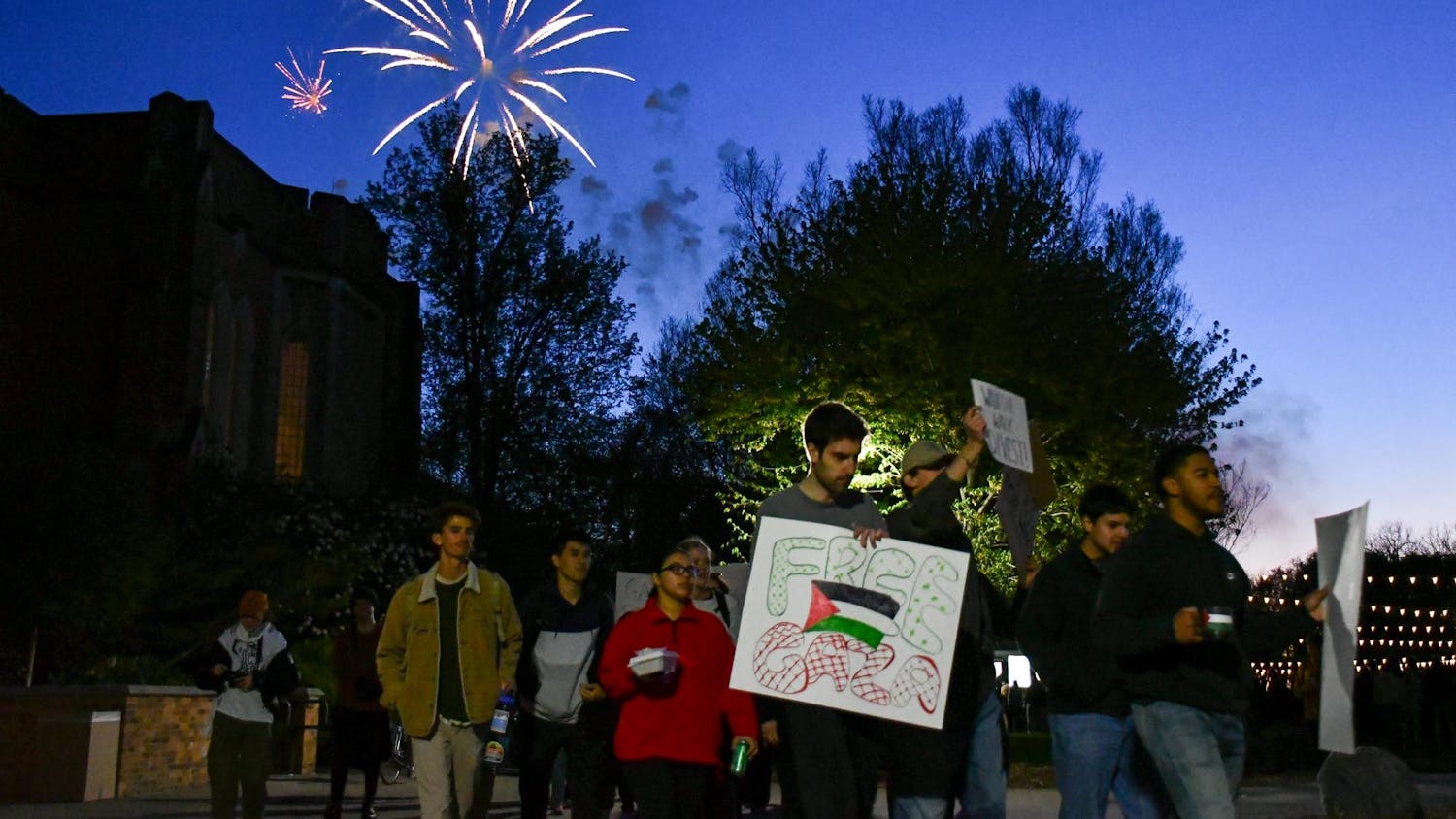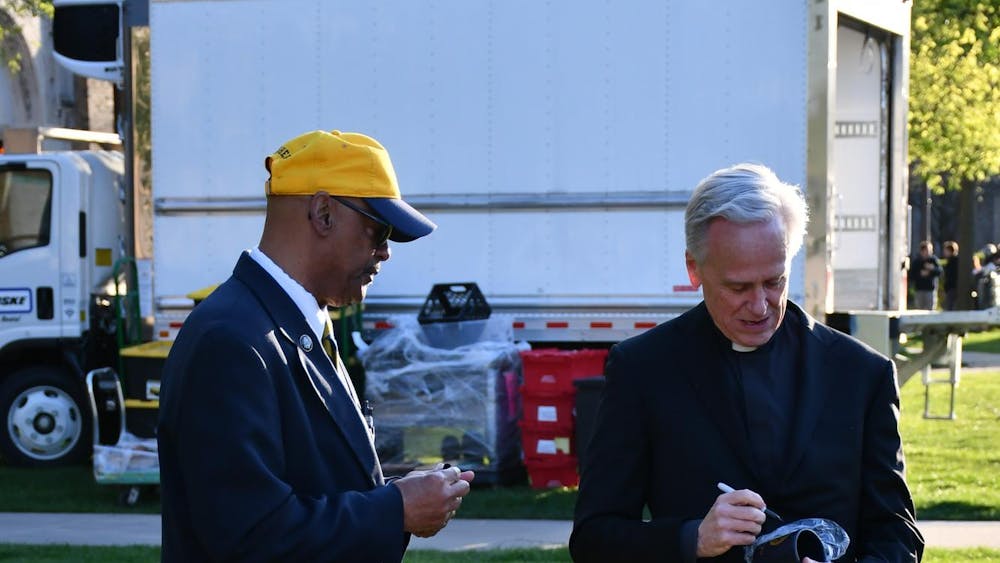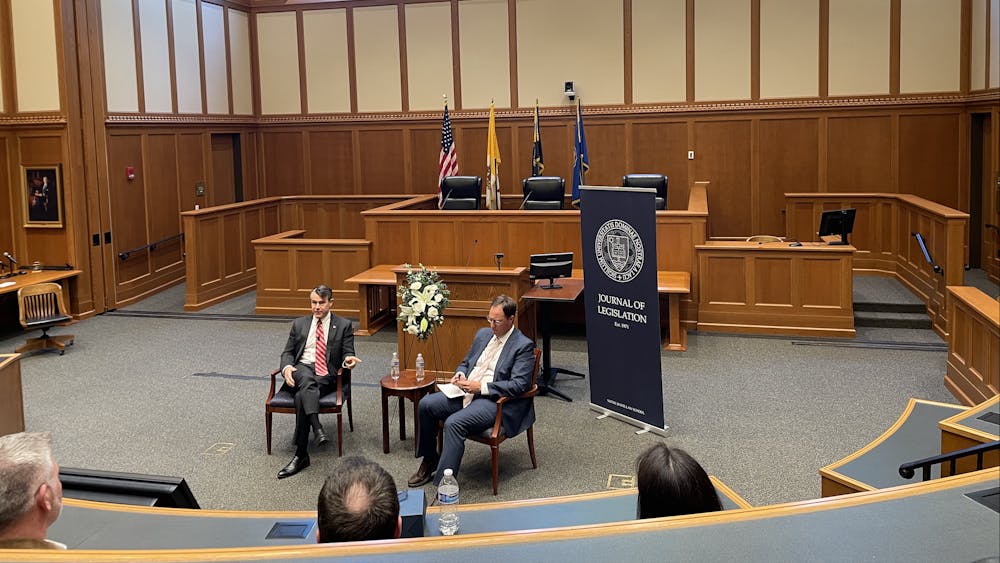Northwestern University professor of musicology Drew Edward Davies analyzed villancicos, which are traditional liturgical poems and hymns popular from the 15th to 18th centuries in Spain and Latin America, and their portrayal of African figures and culture at the Hesburgh Center for International Studies on Tuesday afternoon. The Kellogg Institute sponsored Davies' lecture, entitled “Africa and Africans in Christmas Villancicos from 17th Century New Spain.”
“Villancicos emerged originally as a literary genre that was secular and courtly in nature, but became more religious after circa 1580," Davies said. "They then became a music genre of paraliturgical songs for Matins [a prayer service].”
Traditional villancicos are composed of eight or nine individual pieces related to the religious readings of a given holy day and sung by three voices with or without accompaniment, Davies said. Villancicos de negro were specific verses in that portrayed people of African descent in a stereotypically ethnic light, when in actuality many of them were born in Latin America or Spain and could speak Spanish.
“These villancicos [de negro] typically showed a black male group singing and dancing, often at the scene of the nativity,” Davies said.
Furthermore, one or more of the magi would frequently be depicted as being of African descent, Davies said.
In contrast to the normal Castilian voice of the other villancicos, “villancicos de negro used an idiomatic African voice and pseudo-African words and diction,” he said. "Examples of these include elision — the omission of a sound or syllable — and consonant rich vocabulary.
“Do these celebrate diversity or reinforce colonial hierarchy?" Davies asked.
He concluded that while an “ethnographic view” reveals an African identity as otherwise lost in a foreign culture, the villancicos de negro are oversimplified classifications of a largely slave and servant minority population in Spain and Latin America.
Davies said these villancicos served to “index stereotypes present in Latin American society.” He said scholars should learn to appreciate the beauty of villancicos while at the same time recognize their racial and ideological presentation. He played a few clips of modern renditions of villancicos including "Celebremos el Nino" and "Ah, Siolo Flasiquiyo."
Davies concluded by answering a variety of questions on the religious patronage of villancicos and the distinction between the music and text of villancicos.













